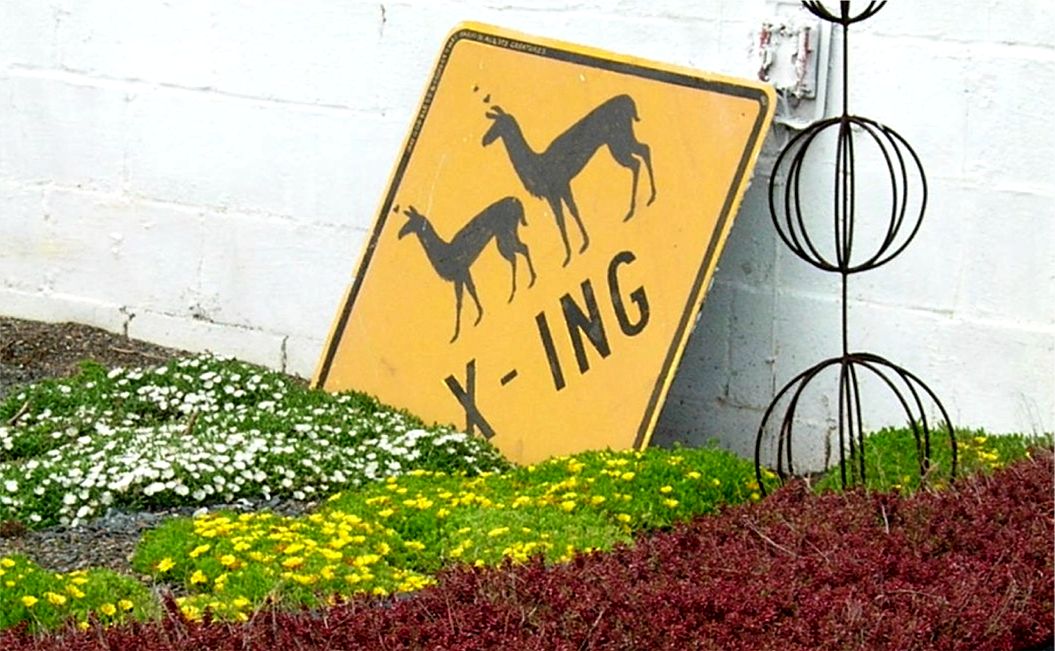
Over the years here at Greenroofs.com we have been fortunate to accumulate eight (so far) very different but certainly unique Contributing Editors who are well known and respected throughout the greenroof community. If you follow us regularly, you know that they all write “occasional” columns, which means whenever they can take time out of their busy schedules (and paying careers, I should add)! They’re all great people whom we’ve come to highly regard as colleagues and friends and today I’ll be inaugurating the “Meet the Editors” series, starting in order of coming on board, so our readers can get to know them a bit more, too – first up is Ed Snodgrass.
Ed Snodgrass is co-owner of Emory Knoll Farms/Green Roof Plants (along with John Shepley), and co-author of the appropriately titled “Green Roof Plants: A Resource and Planting Guide,” 2006 from Timber Press, Portland, OR (along with his [ex-]wife, Lucie L. Snodgrass). As the first nursery owner in North America to devote 100% of production to growing greenroof plants and having presented on the subject across the world, Ed is considered a leader in our field and definitely the expert on extensive greenroof plant materials.
Basically, Emory Knoll Farms jump started a new business market; they currently stock over 100 varieties of greenroof plants and are always acquiring and testing new plants. So Ed’s become quite famous – practically a week doesn’t go by where he’s not quoted or interviewed somewhere…but I’m happy to say that none of it has gone to his head – he’s just a regular, laid back kind of guy who’s passionate about what he does for a living.
And Ed is also our very first Contributing Editor here on Greenroofs.com and has been writing the occasional column “Ask Ed” as our Plant Editor since August, 2004. He answers reader mail, features greenroof plants, and provides highlights of the plant trials and research performed regularly at Emory Knolls Farms (EKF).
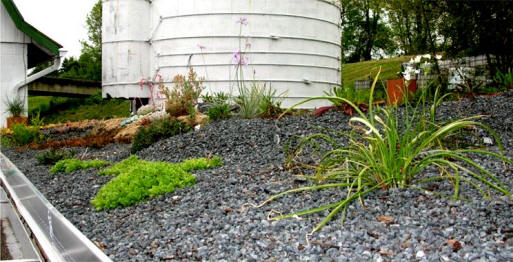
I had the pleasure of visiting Emory Knoll Farms last May, 2008 – Lucie prepared a lovely and healthy locally grown lunch for us in their beautiful 1881 farmhouse. Lucie Snodgrass has been a journalist for years and is very active in D.C. area public policy and lobbying efforts, more recently in promoting local farms, food production and distribution. Together they live on this wonderful farm, tending to the beautiful flower and vegetable gardens, enhancing the local ecosystem, and taking care of Huckleberry Hound, a few cats, and each other.
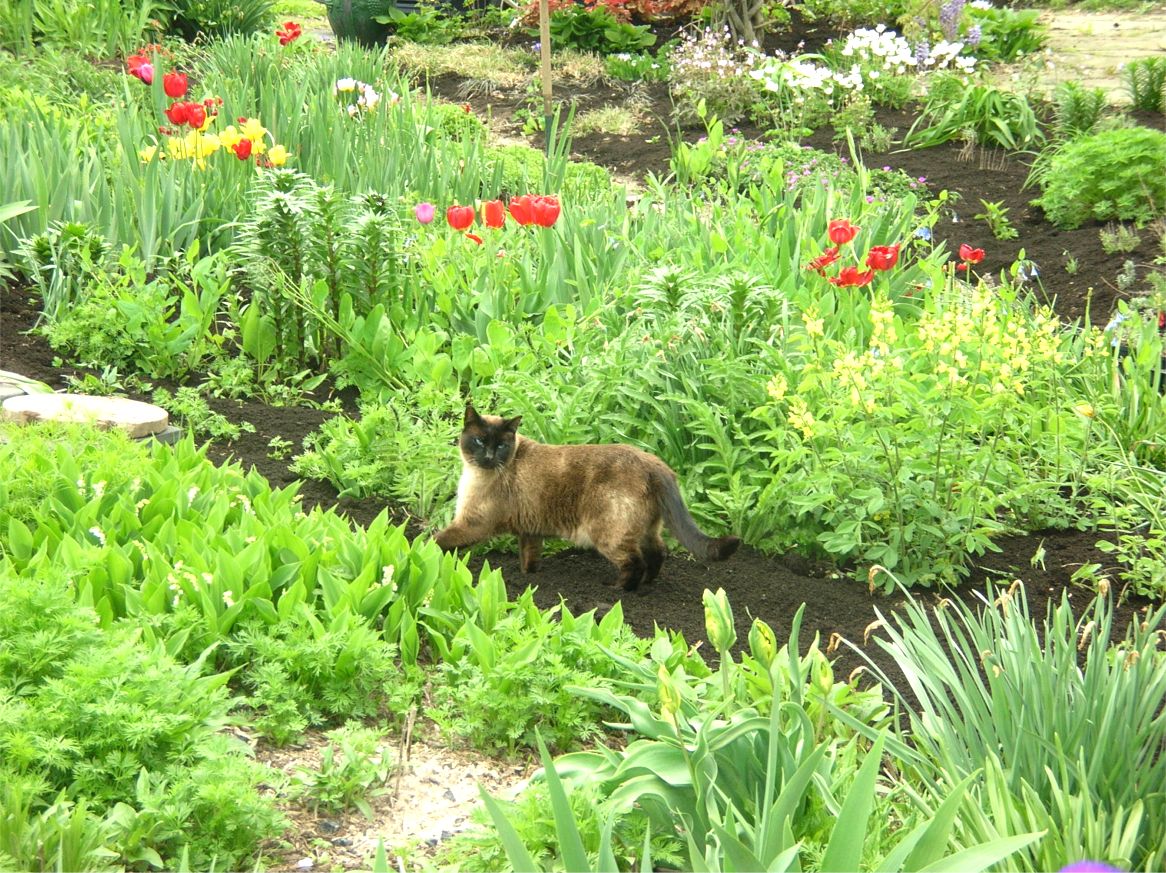
After lunch Ed and Lucie showed our group (my husband, Aramis, our intern [the late] Caroline Menetre, Trish Luckett, Tom Liptan, Brad Rowe, Kristin Getter and me) around the sensitively managed large farmlands starting with the two test greenroofs on site – a smaller one over a barn shed, above, and the larger covering the business office, below. There are other greenroofed surfaces, too, including houses for the kitties, small sheds, and some very unorthodox yet creative applications (more later).
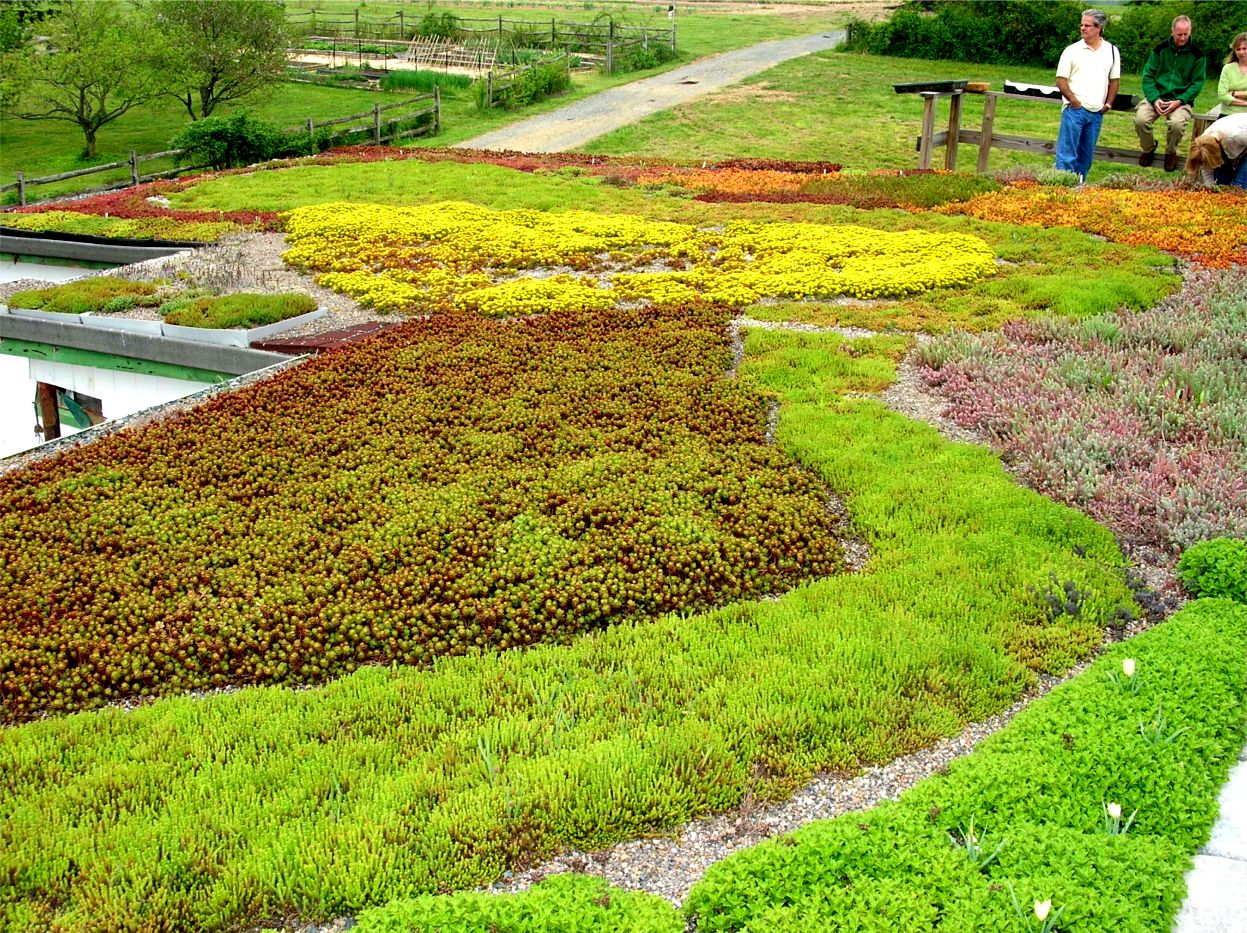
The test greenroofs hold many varieties of succulents and herbaceous plants including various herbs, bulbs and some grasses, and some modular systems are also monitored on the main test roof alongside the built-in-place living roof – which also sports solar panels. Along with plant material, EKF tests growing media and several methods of planting including plugs, seeds, and vegetated mats. Read some of EKF’s trial results here.
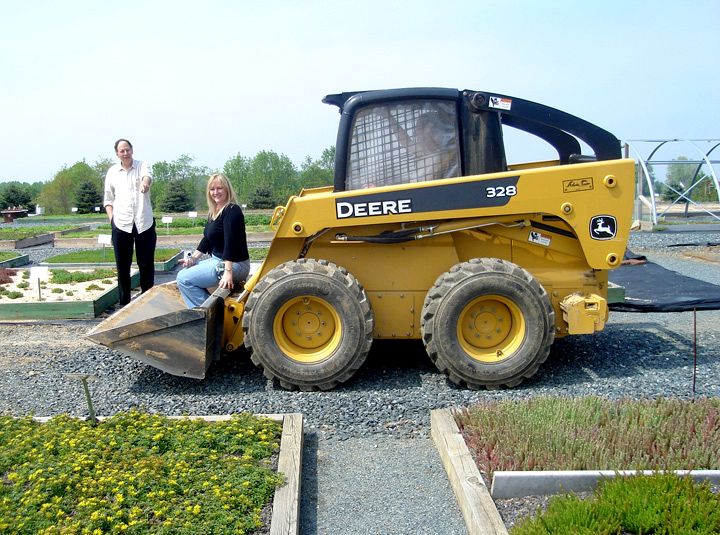
Ed offered me the opportunity to see the growing facility from a really cool vantage point, and so I didn’t hesitate and hopped on board this Deere scooper thing (whatever you call this type of farm equipment!).
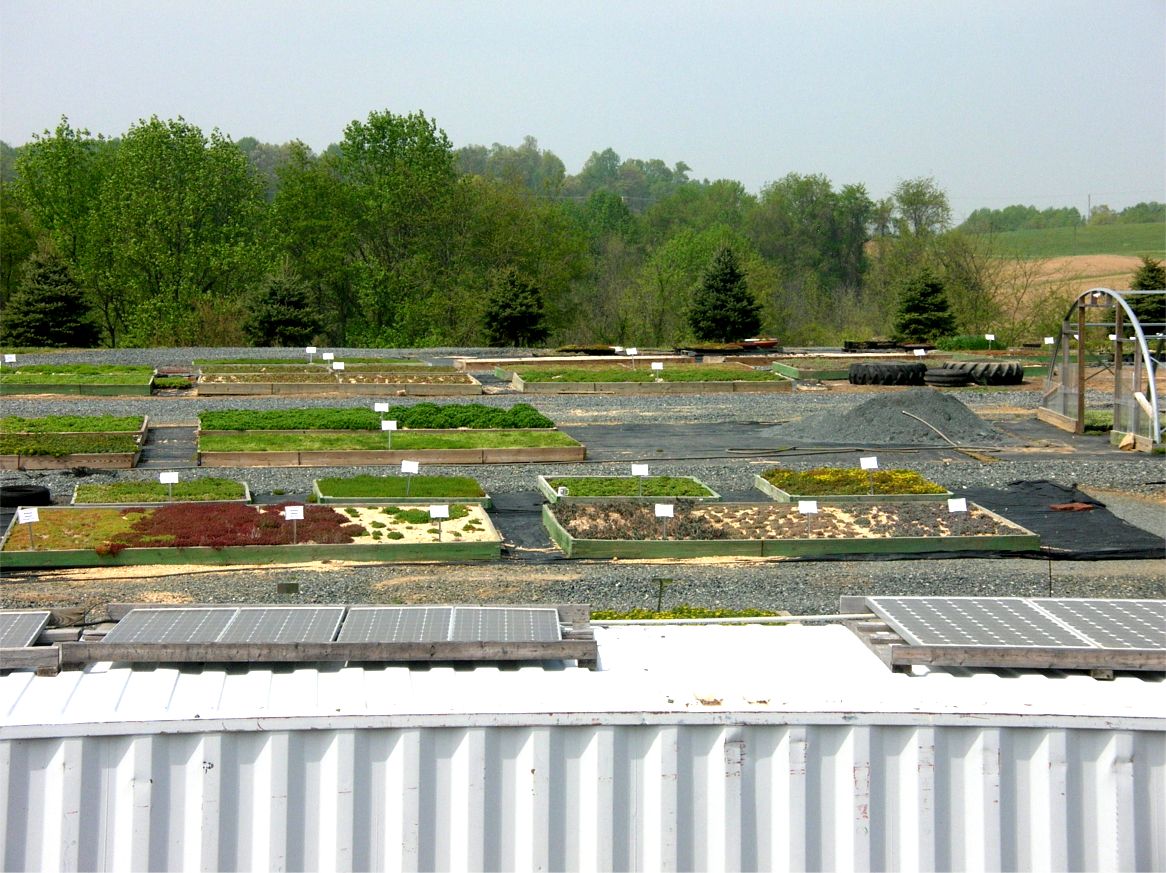
I may not know its name, but it went up pretty high and I did take some interesting overhead photos – notice the solar panels above on some of the growing facility offices, and some of our lovely group, below.
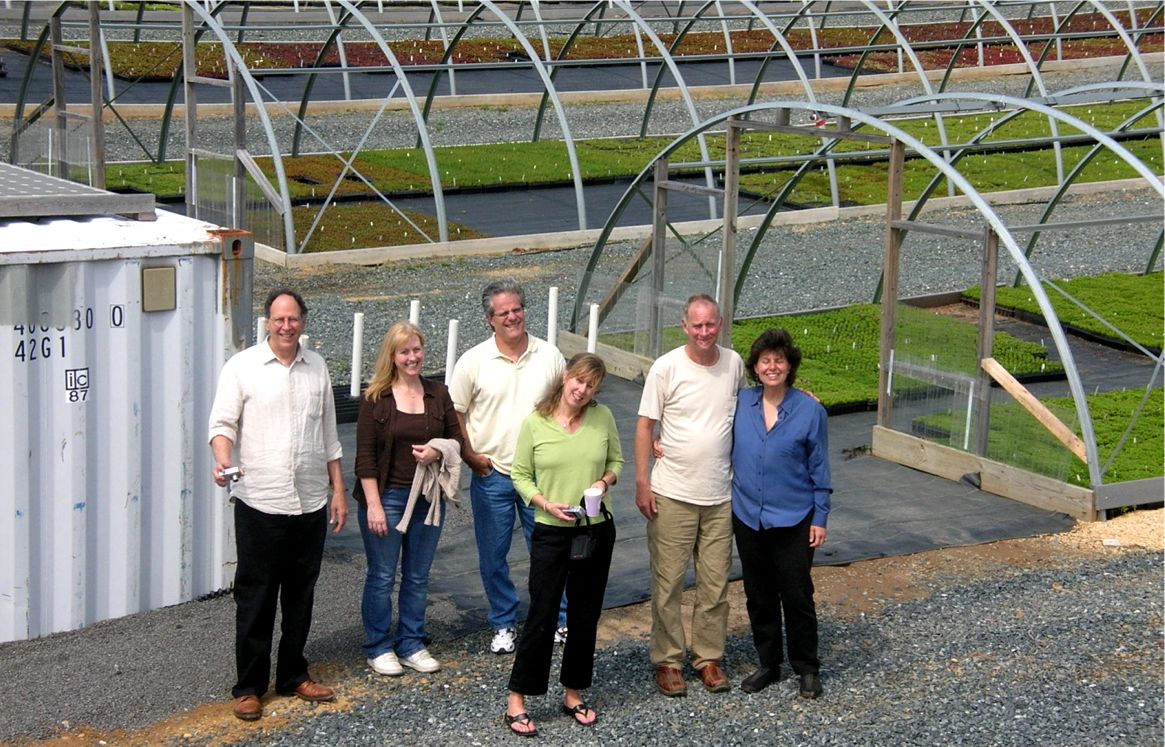
Along the fields and nature trails on the property we also visited the testing area for green walls, the old barn, bee hives, and the nearly 10,000 sf of greenhouse space and acres of stock plants.
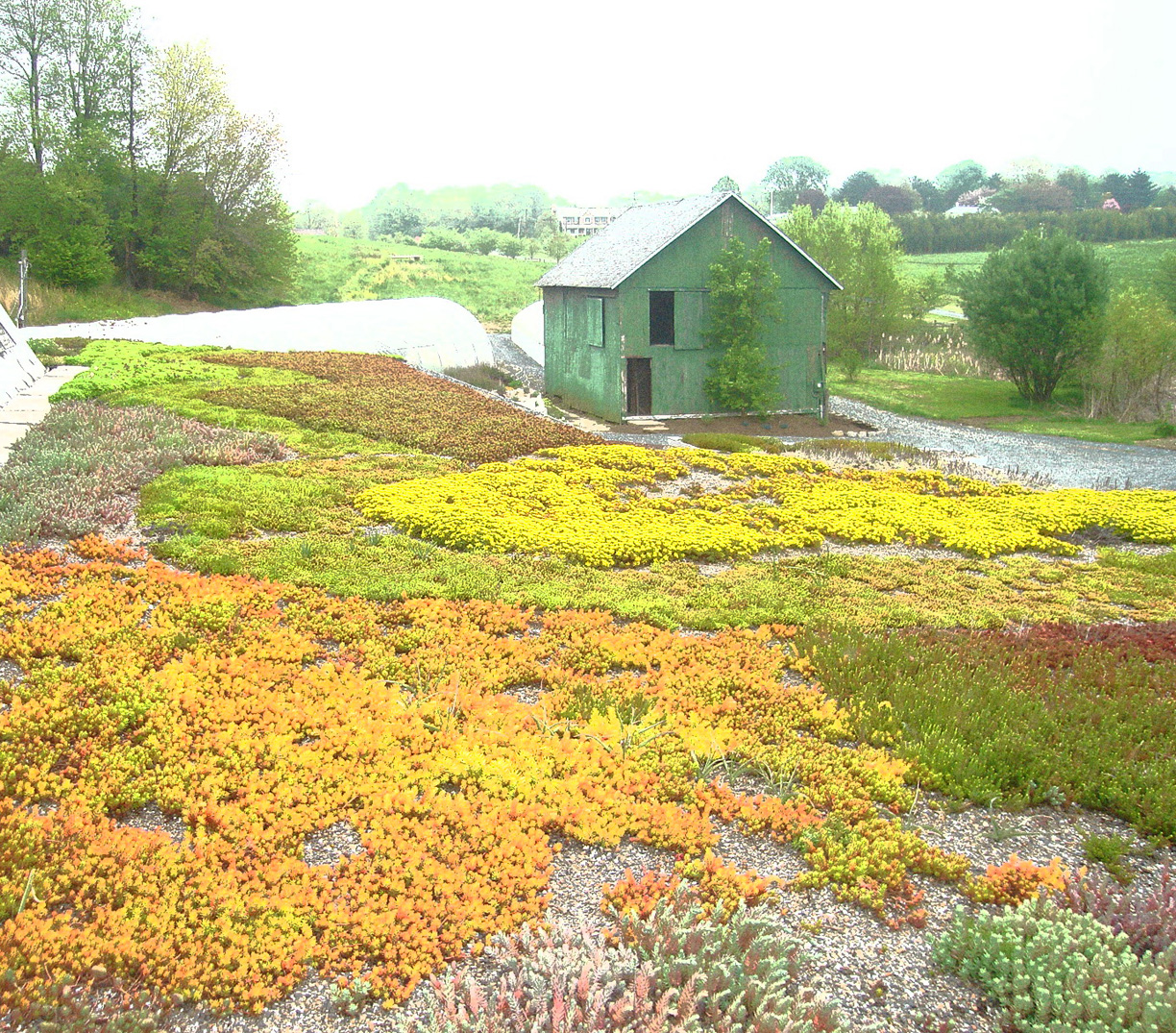
Ed’s pretty private, so it’s an honor for me to have had him answer some of my questions after our tour:
Linda: Ed, you’re a fifth generation farmer, but you also had another completely different career before returning to the land – can you talk about that and why you felt it was important to return to your roots?
Ed: When I was farming I did so because it was what I knew and what I had grown up doing. I never thought about it as a career choice, but after it become impossible economically to farm and I had to go and work “in the world” I realized what a touchstone the land was for me and it was always in my mind to try to make something work on the farm again.
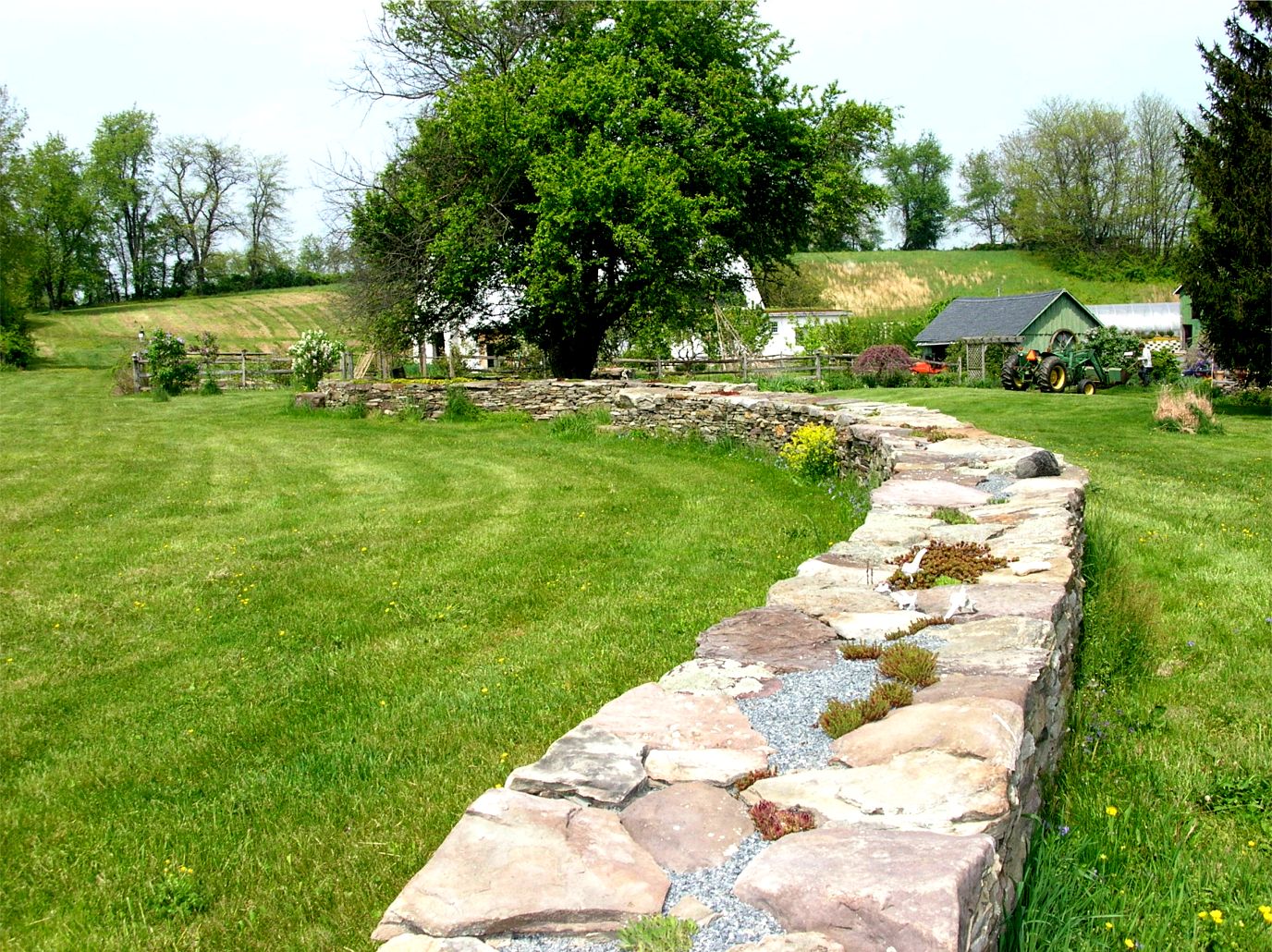
Linda: When were you first introduced to living roofs and how did you arrive at the huge conclusion to dedicate EKF operations exclusively to greenroof plants? In other words, you really went out on a limb back back then – what year was that? This was when we were just a fledgling community, let alone a new industry. What made you and your partner decide to make greenroofs the “green” part of the basis for your “black?”
Ed: I don’t remember the exact date, but somewhere around 1998-1999 I became really committed to the idea of starting a nursery. I was working as a management consultant at the time and doing a lot of traveling. Lucie was also working full time and we both talked about the notion of being self employed. Right around then, the company I was working for was bought by a bigger company and moved to Tampa. I wasn’t about to commute to Tampa, so the time seemed right to start something.
Lucie continued to work and I started to build the nursery. I started by going to farmers’ markets, doing some free lance consulting, some landscaping and anything that would generate a little cash. I had the first green roof sale in 2000 and John Shepley came as a partner in 2004. Lucie eased off her full time work and became a freelance writer and did project work in public policy.
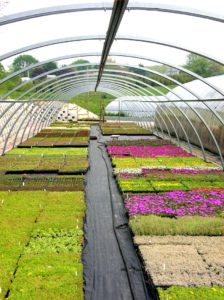
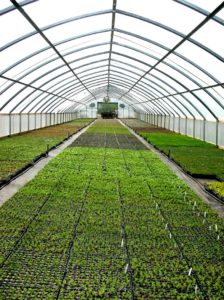 Linda: You carry social responsibility and equitable practices throughout all facets of your life, including running the farm with partner John Shepley. Would you share your philosophy of EKF’s sustainable operations with us and give us some examples of what you are doing to tread lighter on the land?
Linda: You carry social responsibility and equitable practices throughout all facets of your life, including running the farm with partner John Shepley. Would you share your philosophy of EKF’s sustainable operations with us and give us some examples of what you are doing to tread lighter on the land?
Ed: The redesign of the farm is based around the design protocols of the Natural Step. It is important to me to tread lightly because I am on a piece of land and have this opportunity because people that came before me didn’t exhaust it as a resource.
One of the first decisions was to not print a paper catalog and subsequently we have heated all our greenhouses and offices with spent fry oil, we pump all our water for the nursery with solar power, we have a small photovoltaic array, we allow employees to job share, and on the land front, Lucie and I have planted 9 acres of native trees and are turning over 75 acres into ground bird habitat. It feels like we are just beginning to get a handle on our stewardship responsibilities.
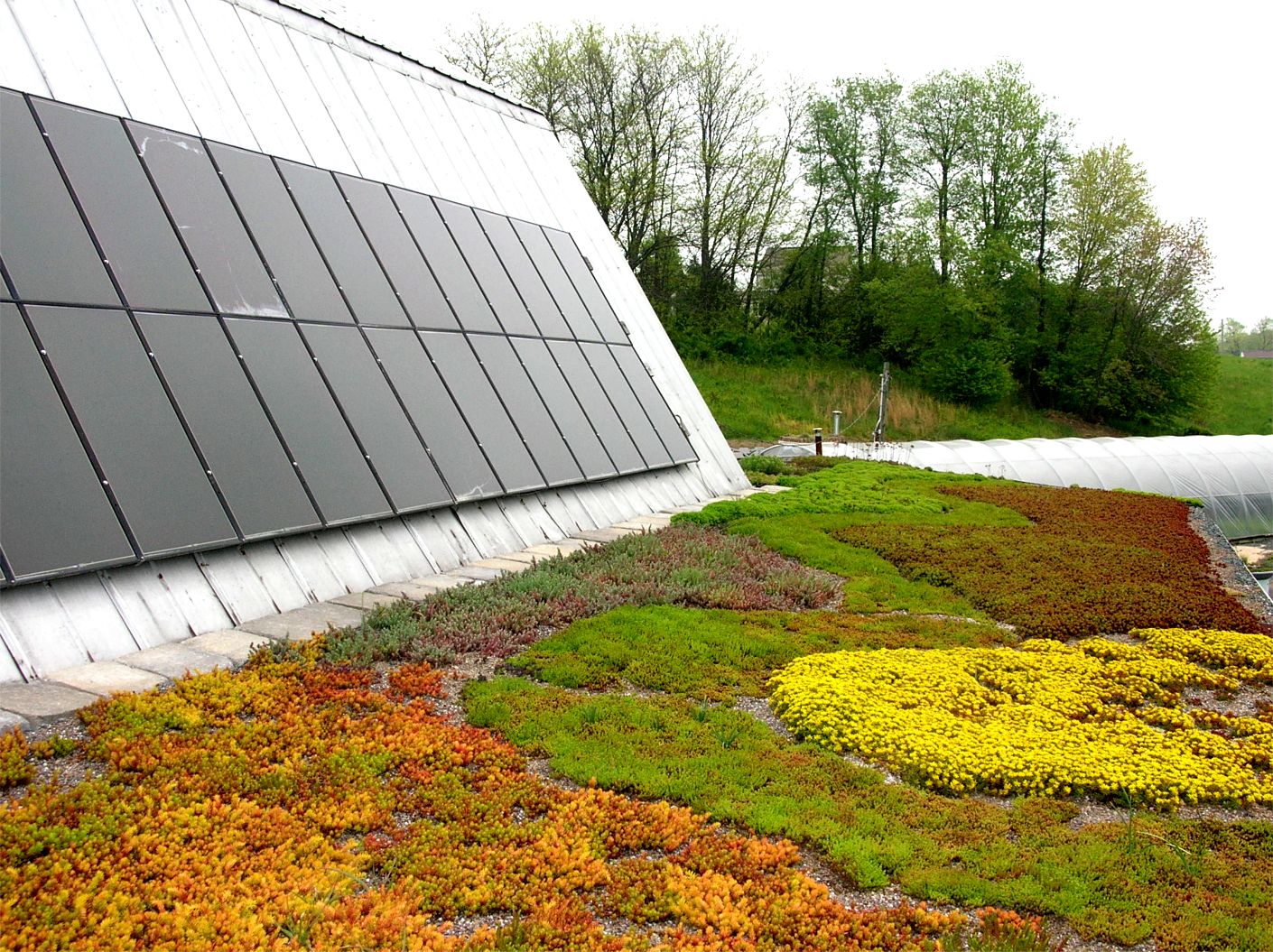
Linda: How did you go from llamas to greenroofs? And what’s the deal – are you really a hippie? I remember one of your “fans” sent this in a while back:
Dear Ask Ed,
The picture of you in a lab coat suggests you are an MD or have a Doctorate in something. Are you? The sign on the wall presents some confusion as Hippies are an untrustworthy, unclean lot. So how do I know you are a legitimate specialist and not some wacko aging hippie grinning outside his meth lab?
Signed,
Wanting to trust
Ed: Check out the song from the group The Bobs: First I Was a Hippie, Then I was a Stockbroker, Now I am a Hippie Again. I think that song about sums it up.
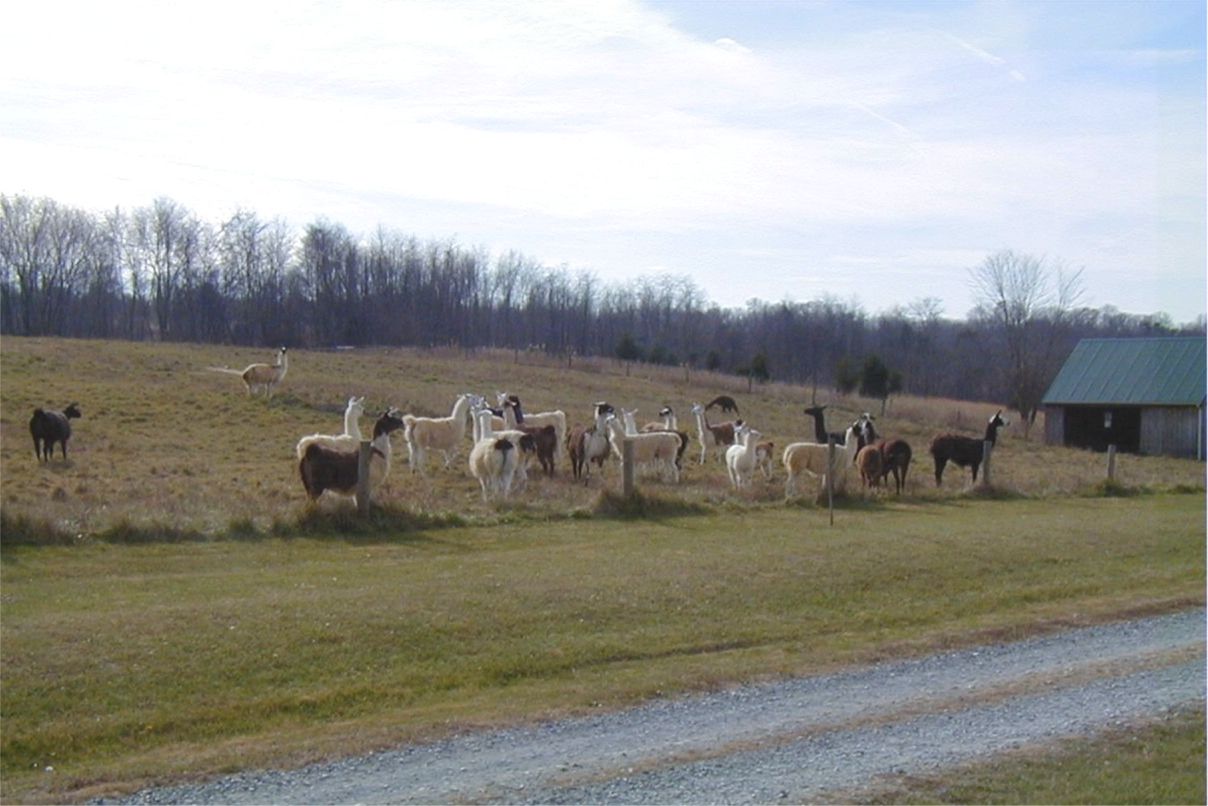
Linda: You’ve been central to the greenroof movement from the beginning through plant research, development, public speaking, and most recently writing your first book along with Lucie. What do you enjoy most about your work, and do you see any more book endeavors in the future?
Ed: I don’t think I have been central to the green roof movement, there are lots of folks that are moving this thing forward. It takes a village to make a green roof? I enjoy learning most of all, and I enjoy the people I work with at the farm. They are bright enthusiastic folks I learn from them every day. I love watching things grow and looking at the systems that support things that grow. The people that are in the green roof movement worldwide are great people to converse with and learn from.
I have two more books on the way, one with Nigel Dunnett, Dusty Gedge and John Little on small do-it-yourself green roofs. That one is due out in May of 2009. I am also working on another book, it’s going to be on green roof design, install and maintain, mostly from the plant perspective. I have a new co-author, Linda McIntyre who was a staff writer and editor for Landscape Architecture Magazine and did all their green roof articles over the last few years. We hope to help fill the knowledge gap that exists in the market today. That book is due out in early 2010, both are from Timber Press.
Linda: Emory Knoll Farms/Green Roof Plants has supplied over 2,489,238 sf or 221,251 M2 of greenroofs so far across North America – is there one particular project which is your favorite, or maybe particularly important in your eyes?
Ed: I do like the one in Fells Point in Baltimore. It is on the Mikulski Workforce Development Center at Living Classrooms. Lucie and I are big fans of Senator Mikulski and Living Classrooms and their work, and it is a green roof that you can see from the ground, which is kind of rare.
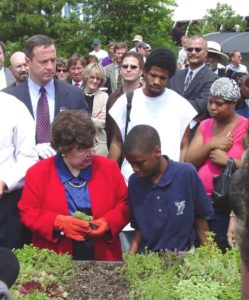
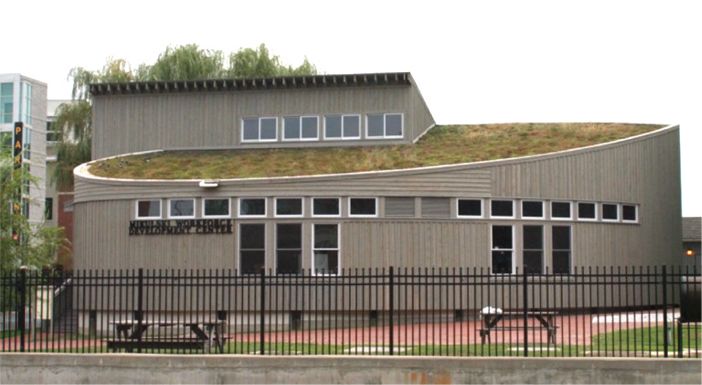
And I do like the ones I have at the farm because I get to see them everyday, especially my barn roof which I see every morning from the bedroom window. Gardens change every day and I love watching the change.
Linda: What issues do you feel are important within our industry, and where do you see us heading in the next few years? What would you like to see changed or addressed?
Ed: I think the public policy side of the industry has to come into focus and be more uniform and that will require more quantifiable benefits derived from the research community. I see that coming in the next few years.
I think design intent will become sharper as that happens and green roof terminology may become more precise. I would like to see green roofs become more integrated with other green technologies like vegetated swales, rain gardens, and water harvesting.
Linda: I think you’re a consummate professional, a trailblazer, and all around nice guy. But if there was one thing that you’d like people to know about you or how you see the world, what would that be?
Ed: That is nice of you to say, but we are only as strong as the people around us. I think the world is getting smaller and faster; we need to think of all the people, plants and animals as part of ourselves if we are going to make truly lasting gardens.

You may have realized that Ed and company have quite a sense of humor. Not all is hard work on Emory Knoll Farms – check out some of the lighter research going on here…on greenroofs? I don’t know – maybe green topped. For example, remember the previous incarnation as a llama farm? Well, they put some bones to rest in an unlikely spot – talk about recycle, reuse!
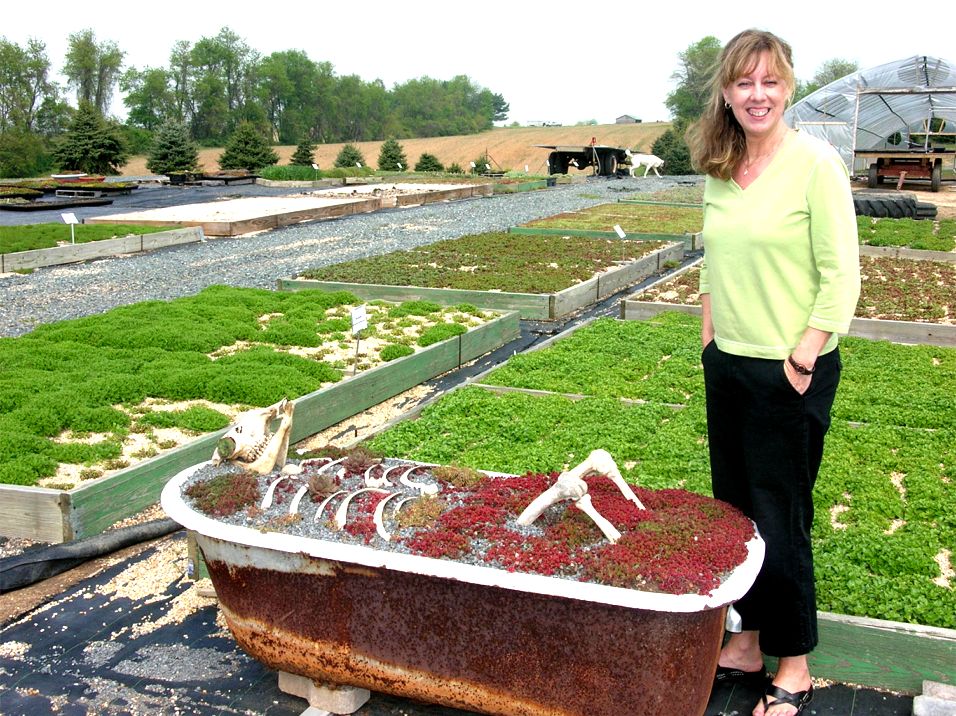
And although the EKF office has a composting toilet, the photo below shows Tom Liptan (who works, appropriately, for a Bureau of Environmental Services) displaying one of Emory Knoll Farms’ even greener environmental options: the Sedum Toilet – “storm” water management at its best!
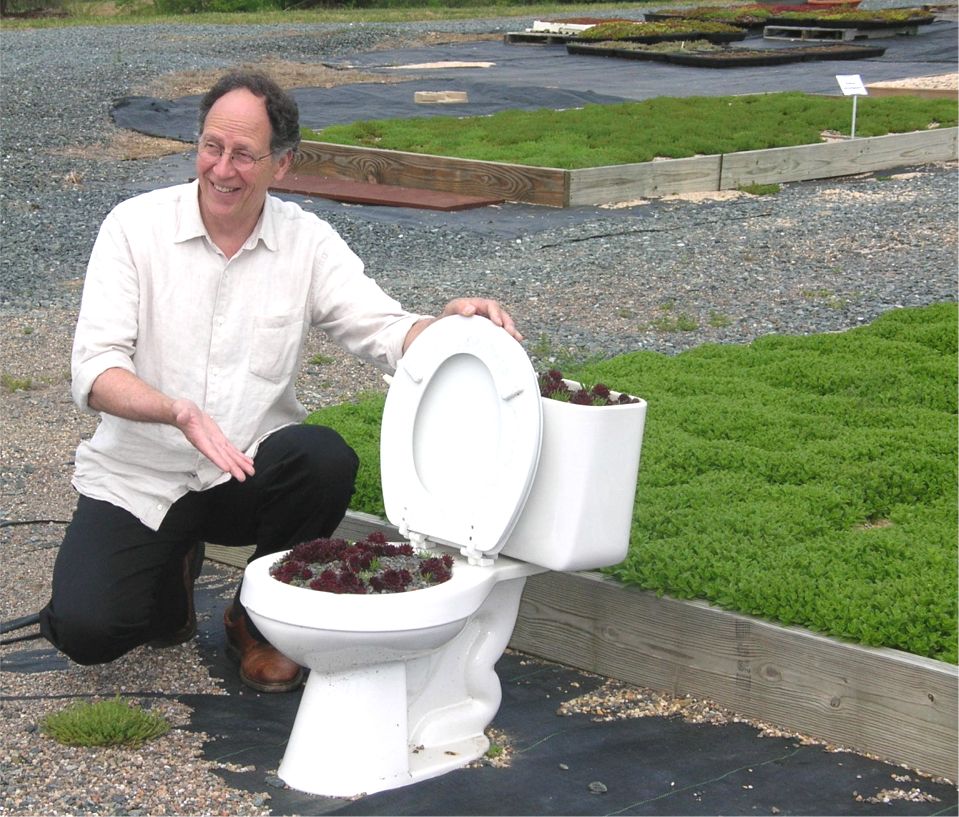
In case you’re interested in seeing Ed in public, here are some of his upcoming speaking engagements:
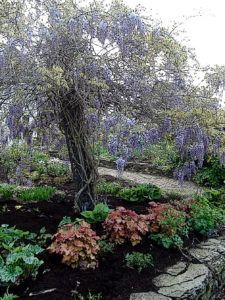 Sunday, March 15, 2009 – Alexandria VA: Harry Allen Winter Lecture Series, Green Spring Gardens
Sunday, March 15, 2009 – Alexandria VA: Harry Allen Winter Lecture Series, Green Spring Gardens
Wednesday, May 6, 2009 – Bel Air MD: Leadership Group, Harford Leadership Academy
Thursday, June 18, 2009 – Denver CO: Green Roofs for the West Symposium, Denver Botanic Gardens
Sunday, July 12, 2009 – Portland OR: APLD Conference, APLD
So thanks, Ed, for sharing some personal thoughts with us. Among all the other things that you do, we know you’re a writer – but how about a blogger? We haven’t read anything from you yet here, but this could be a new horizon for you… Should our readers expect to hear from you on Sky Gardens sometime in the future?
We’ll see… Until then, send him your Plant and Horticulture questions to:
ed (at) greenroofs.com or Ed.Snodgrass@greenroofplants.com.
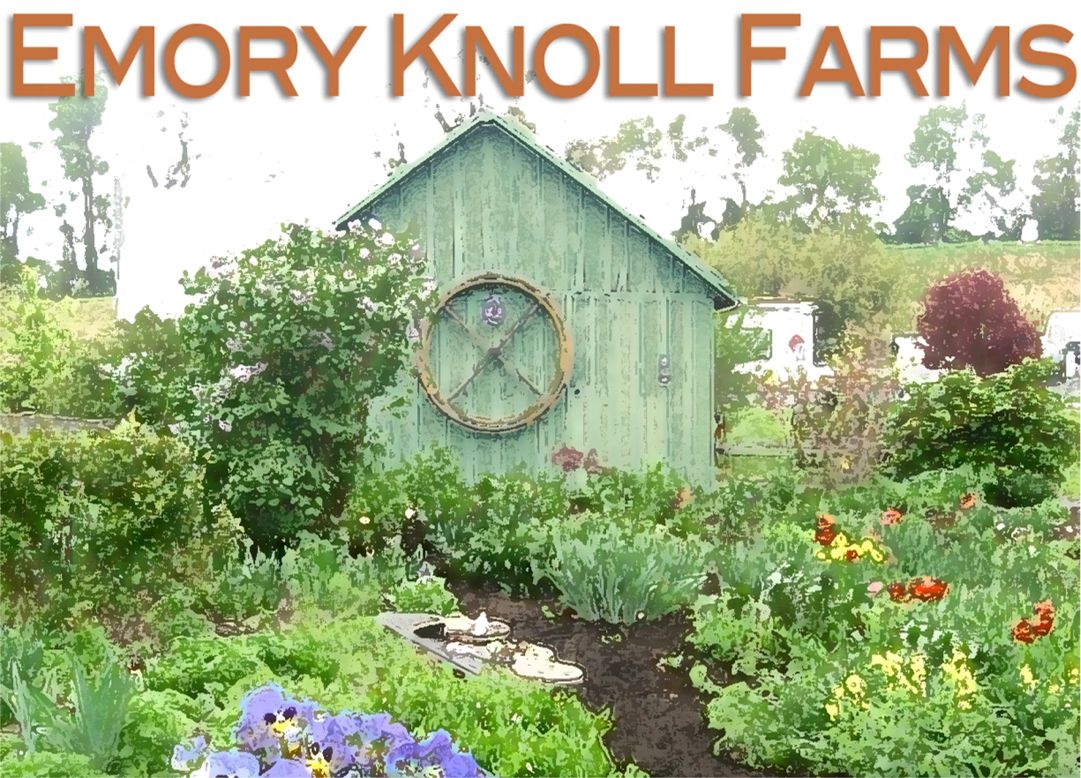
Next up in “Meet the Editors” is Christine Thuring, ecologist, researcher, world trekker, and currently our Student Editor (among other personas).
Happy Greening,
~ Linda V.
 Greenroofs.comConnecting the Planet + Living Architecture
Greenroofs.comConnecting the Planet + Living Architecture



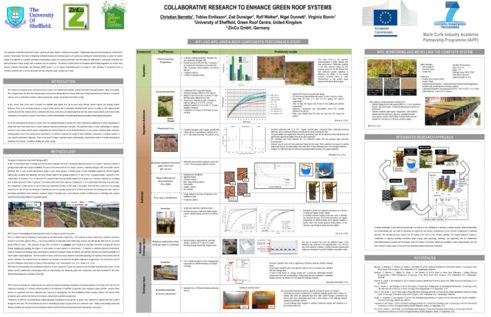
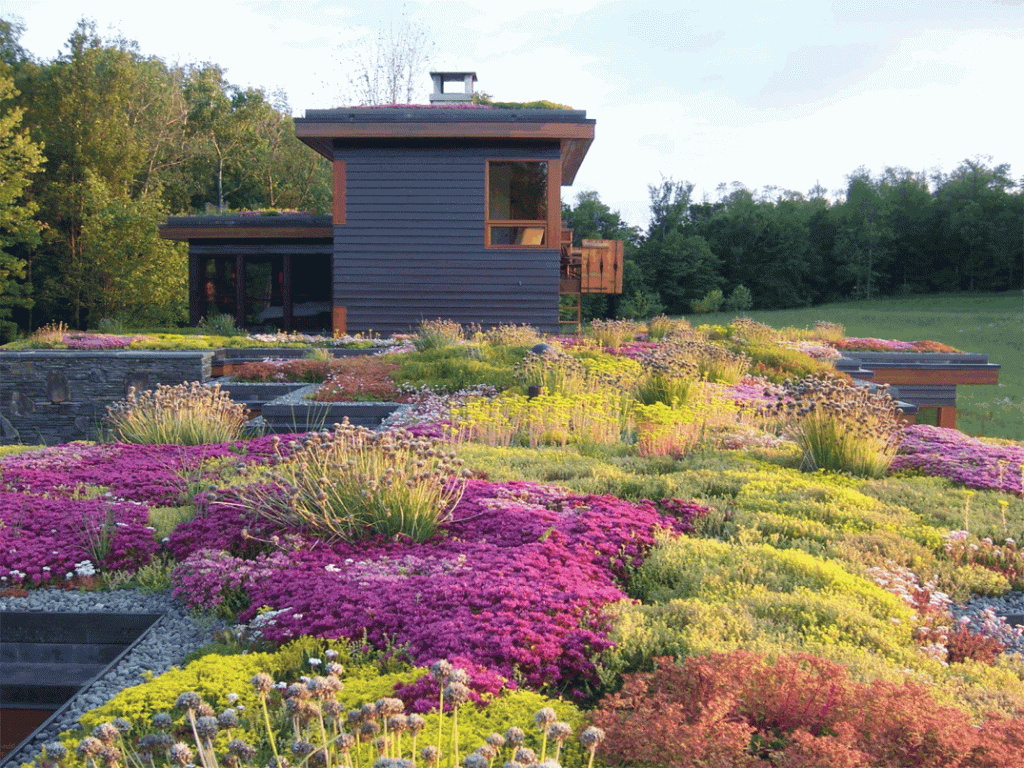
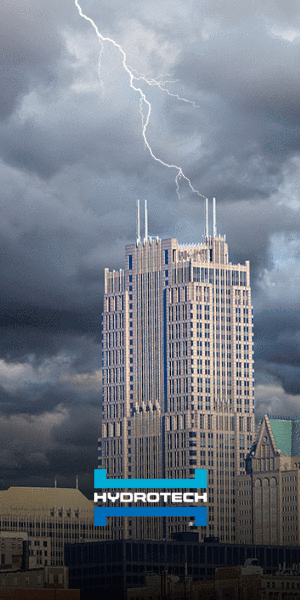



Green Loft Designer
These are wonderful design concepts – excellent use of green technologies. I love the toilet being used as a planter! We’ve recently built an urbanloft green roof garden in one in NJ. Take a look. I look forward to reading more of your articles.
Emlyn Stancill
What a wonderful post about a great guy (plus wife) and their beautiful farm. I really appreciate that they’re taking their business a step further into all-around stewardship. It’s really inspiring. Wonderful photos too!
Sky Gardens » Blog Archive » Ecoroof Portland – Inspiring, Fun, & Free
[…] Plant Editor, who writes his occasional column “Ask Ed“ – read my “From Llamas to Greenroofs: An Interview with Ed Snodgrass.” See full profiles here and a complete list of all the speakers and Agenda […]
Sky Gardens » Blog Archive » Ed Snodgrass & John Shepley Voted Two of America’s Most Promising Social Entrepreneurs 2011
[…] some background on Ed and Emory Knoll Farms, you can review my 2009 “From Llamas to Greenroofs: An Interview with Ed Snodgrass.”  Visit the Emory Knoll Farms/Green Roof Plants website […]
Sky Gardens » Blog Archive » Greenroofs & Walls of the Worldâ„¢ Virtual Summit 2011 Episode 19: Green Roofs Without the Hype
[…] Ed’s an accomplished nurseryman, author, proponent of sustainable business practices, and an all around affable guy with a big heart, and writes the (very occasional!) column “Ask Ed.”  We had the pleasure, along with our attendees, of having Ed as one of our Keynote Speakers at our Virtual summit last September – look for his video “Right Plant, Right Place” coming up soon.  Read my in-depth interview with him at his family farm, Emory Knoll Farms, here. […]
Sky Gardens » Blog Archive » Greenroofs & Walls of the Worldâ„¢ Virtual Summit 2011 Episode 26: Right Plant, Right Place
[…] my From Llamas to Greenroofs: An Interview with Ed Snodgrass for more information about Ed, the farm, and this fun day of […]